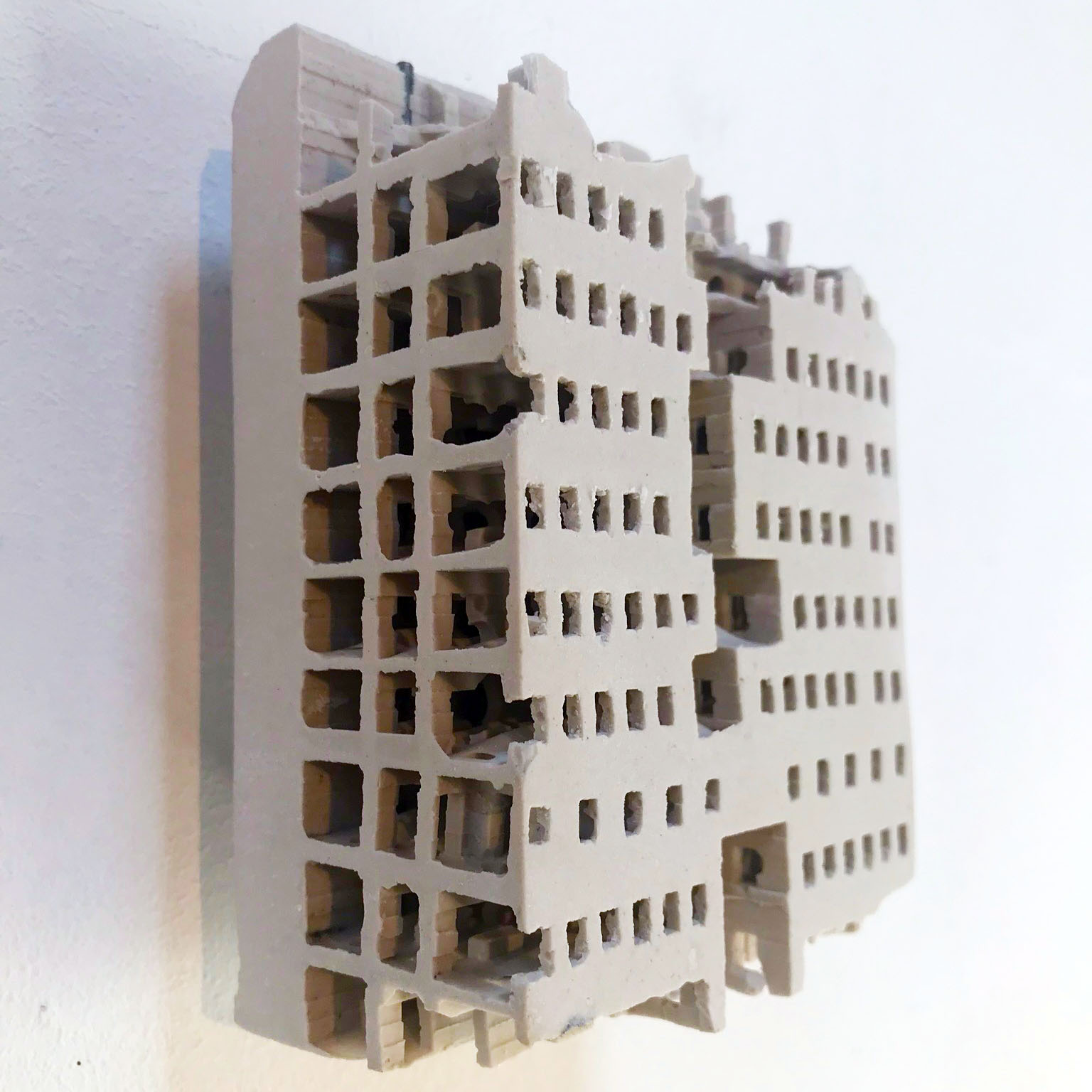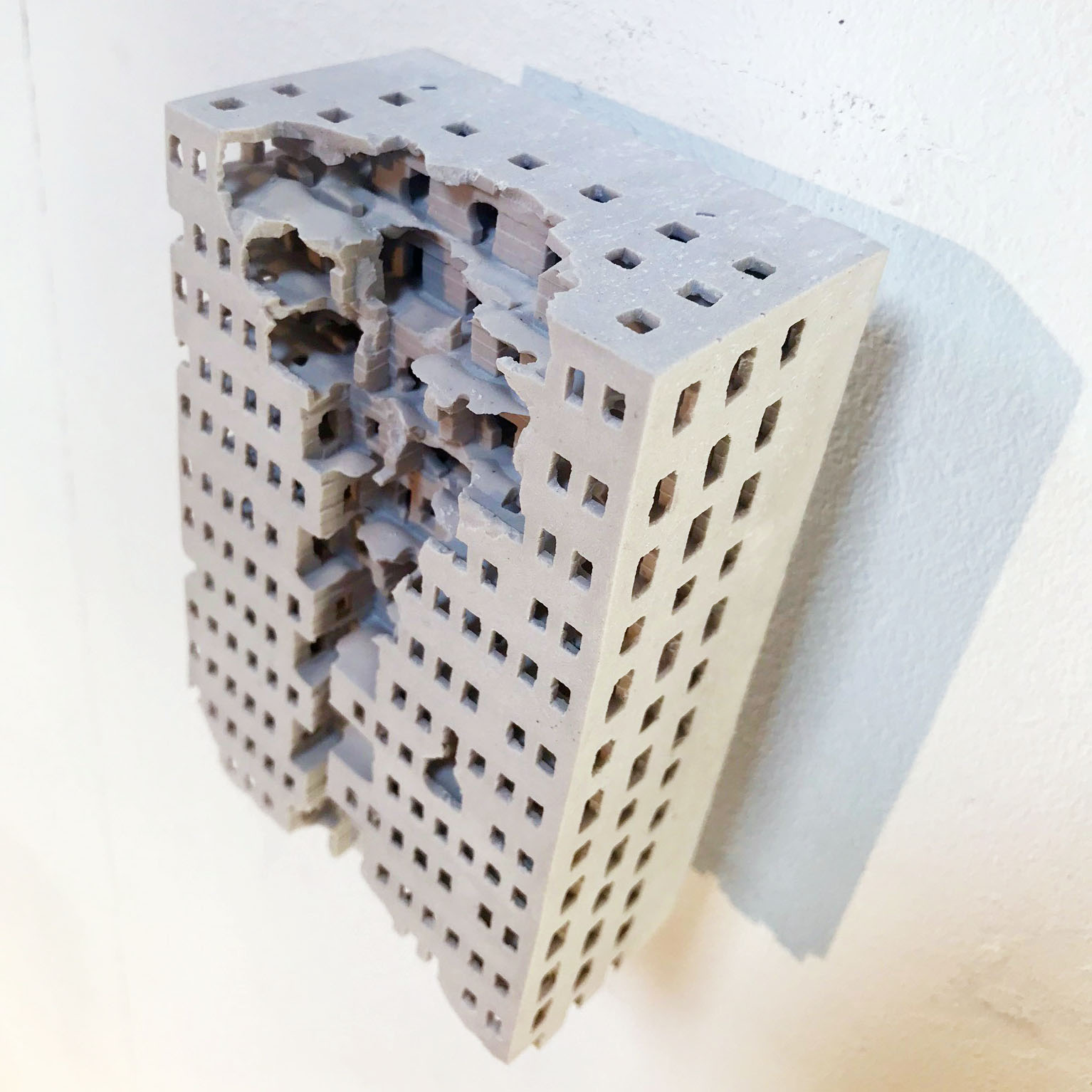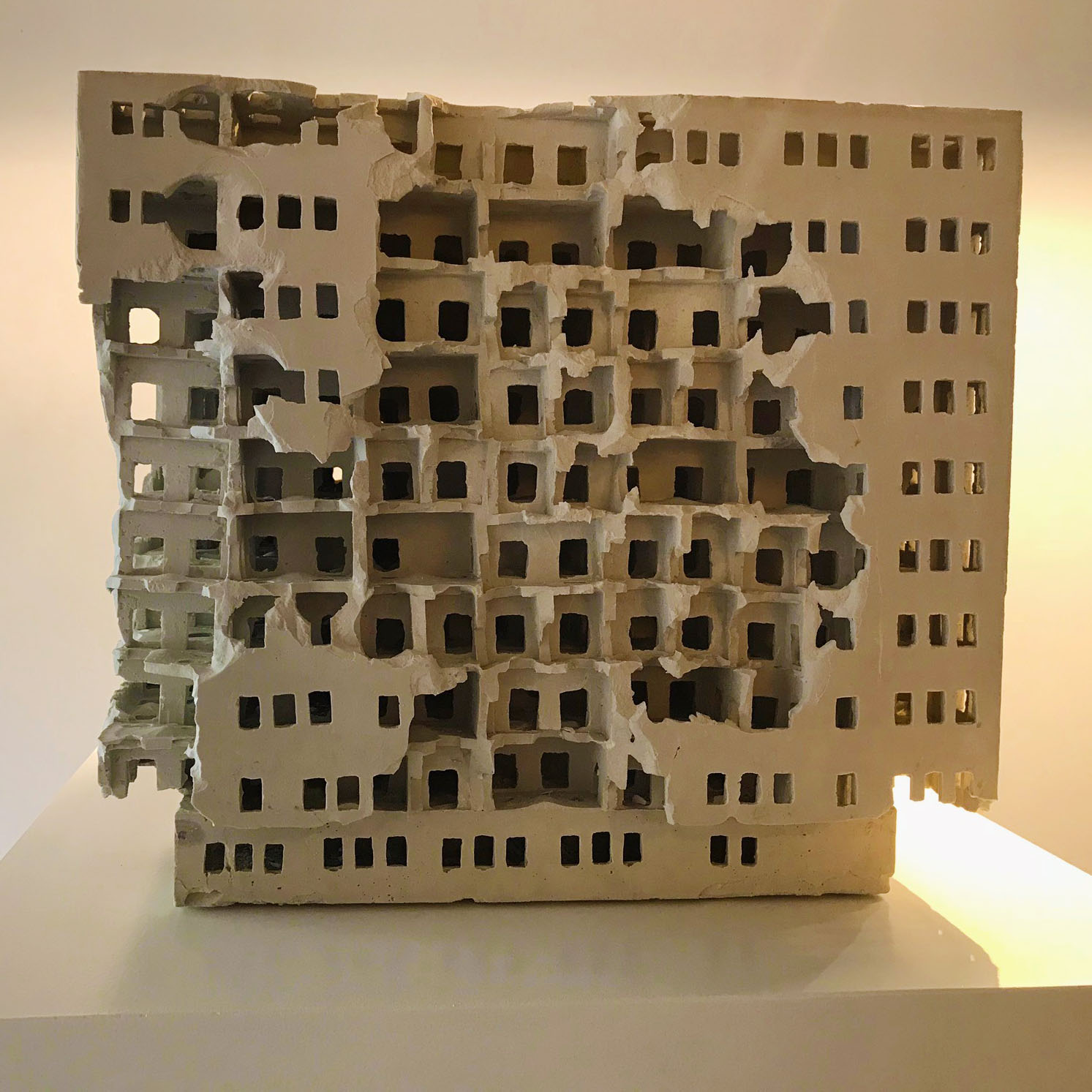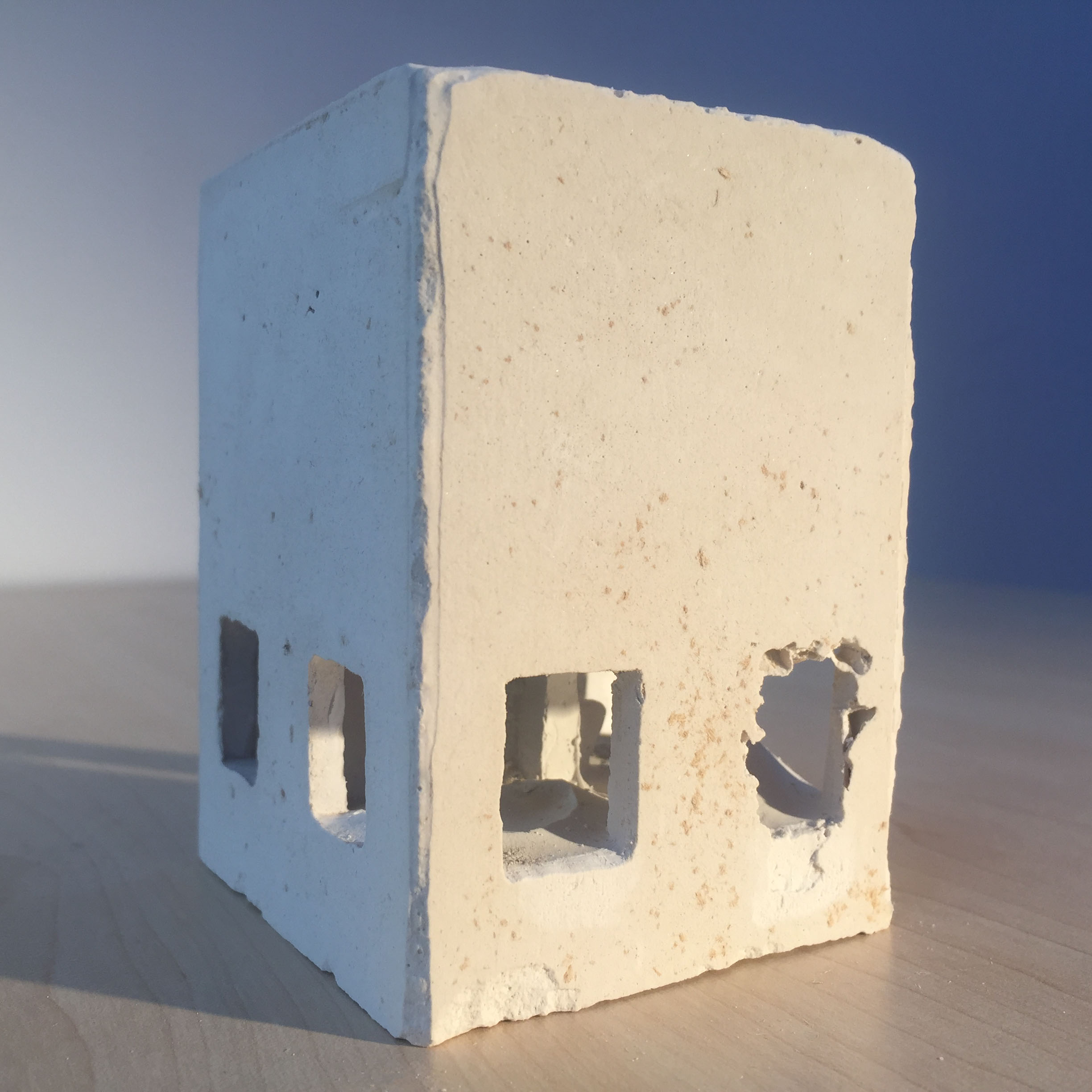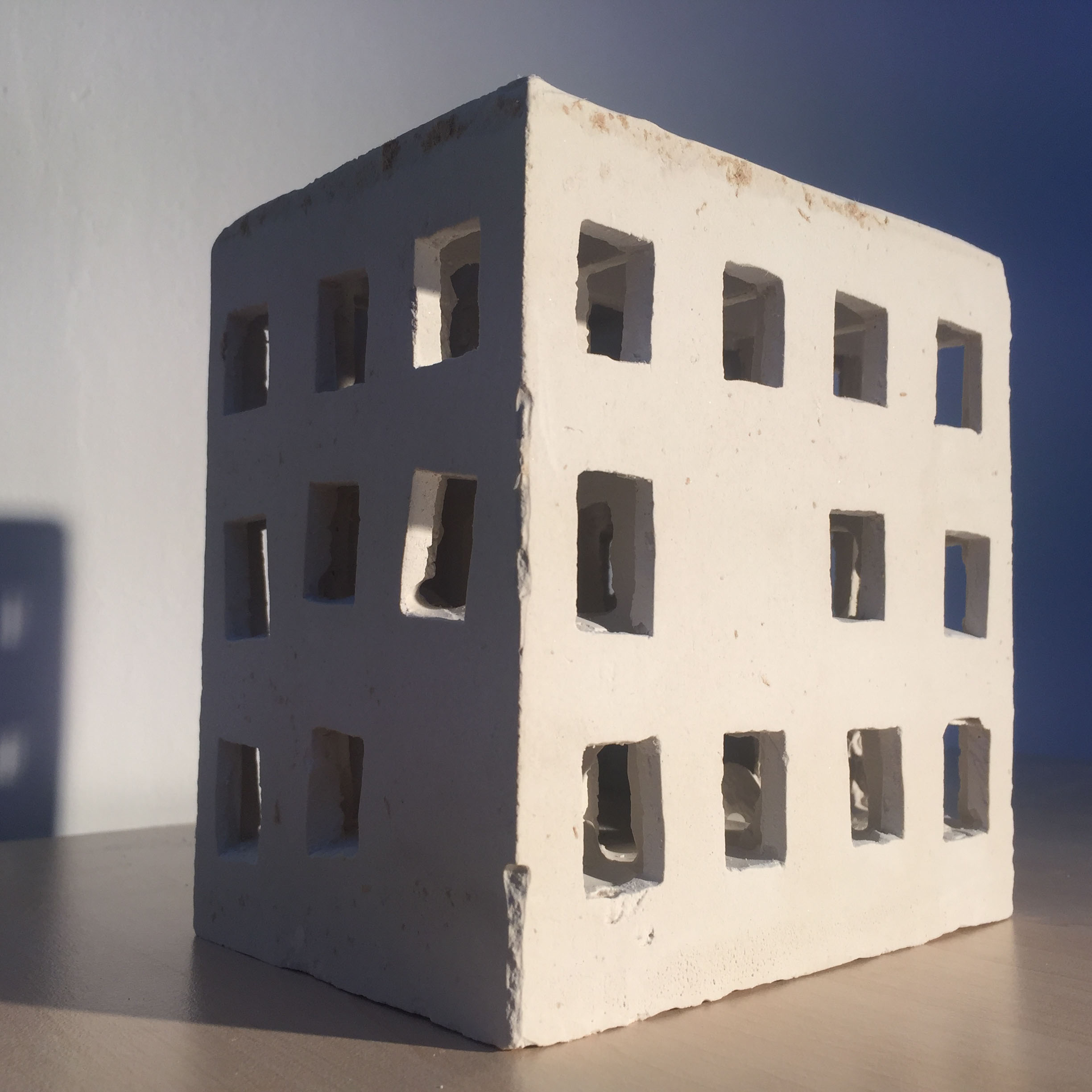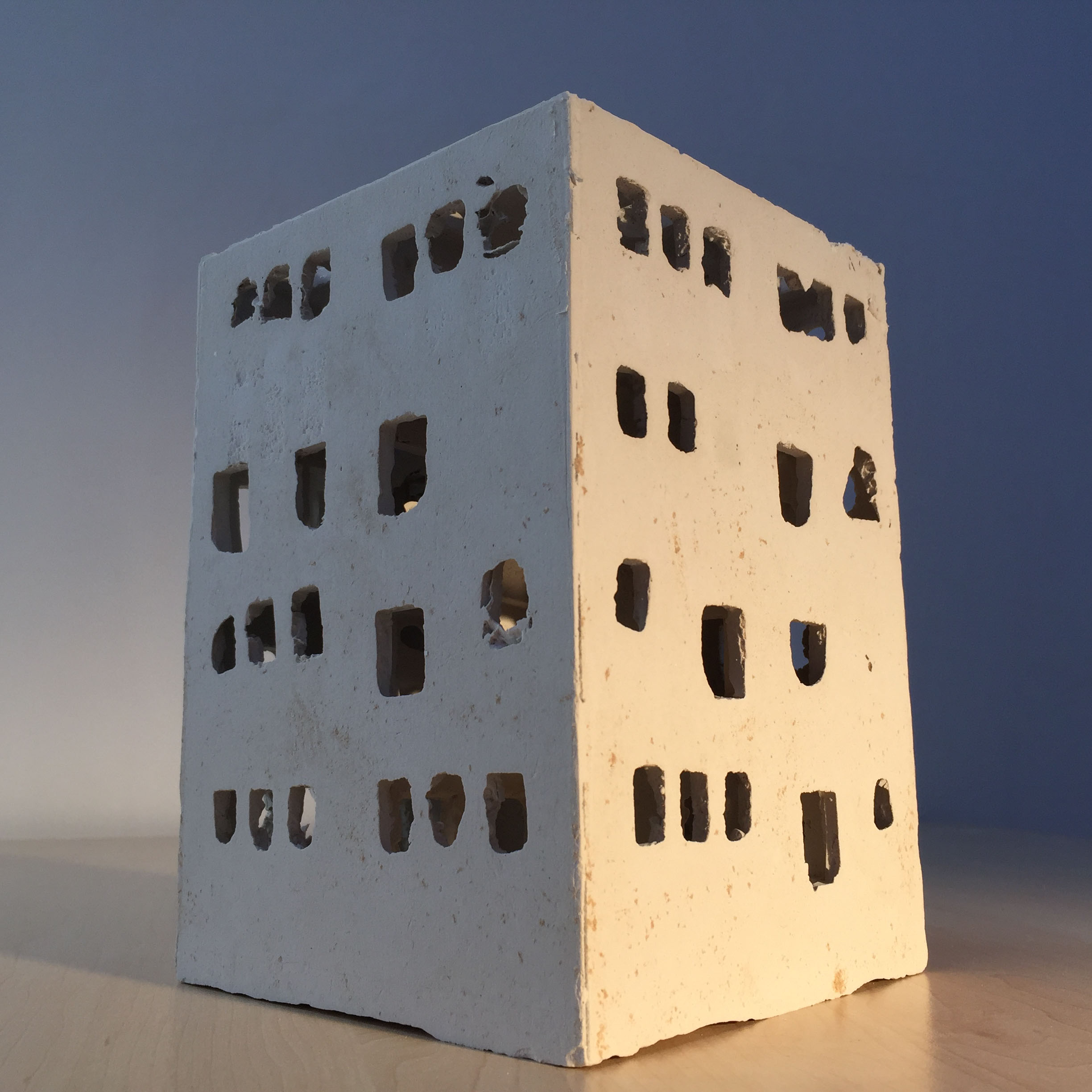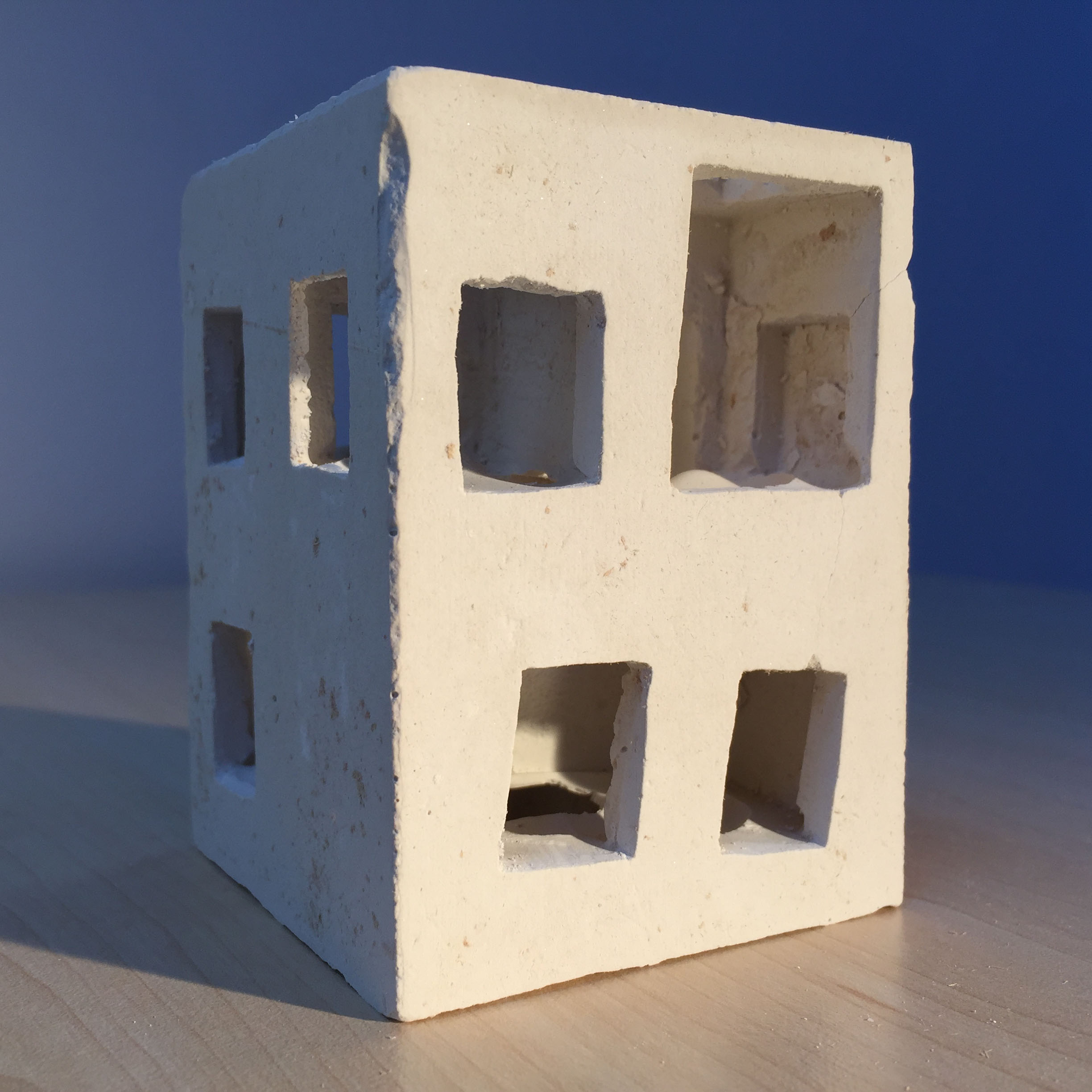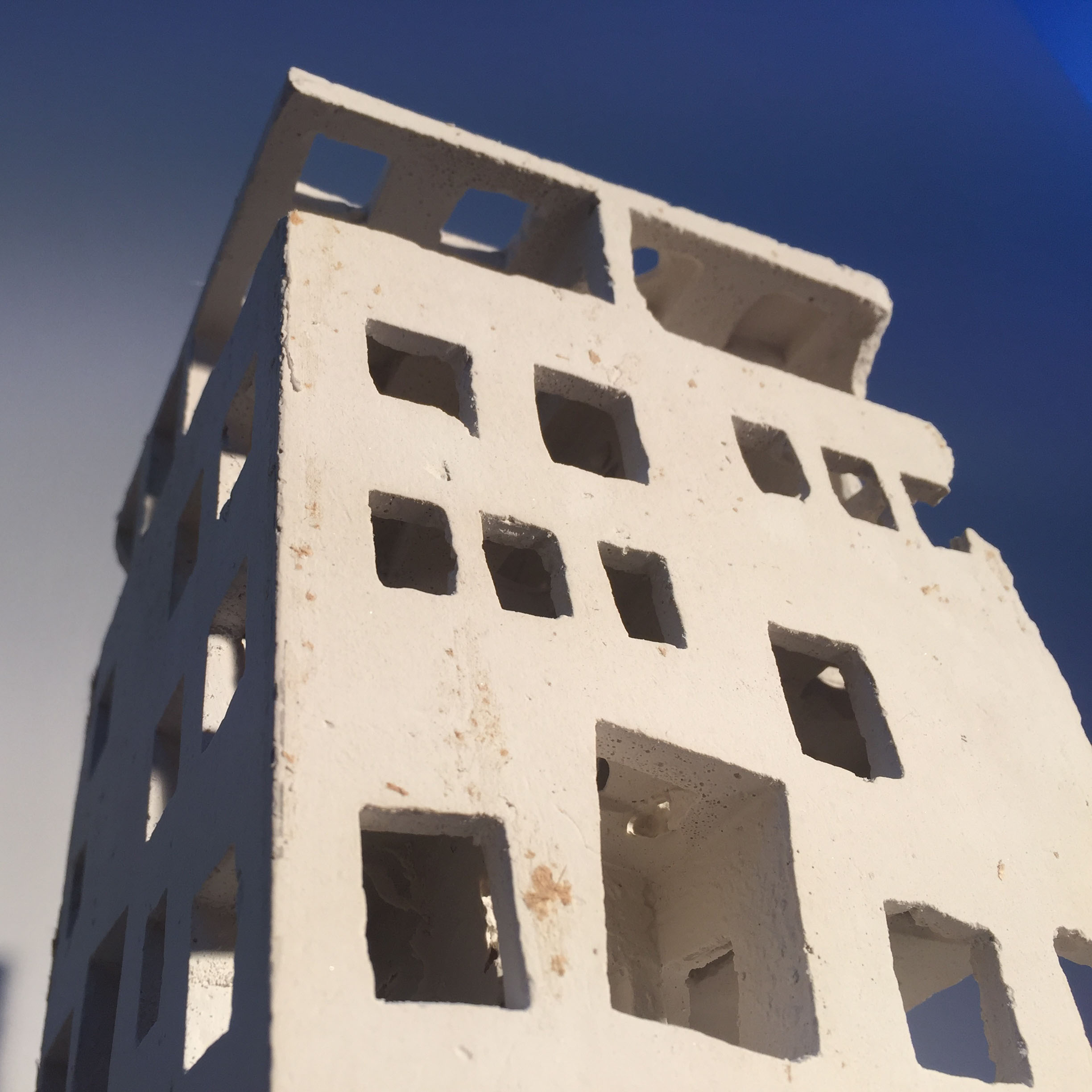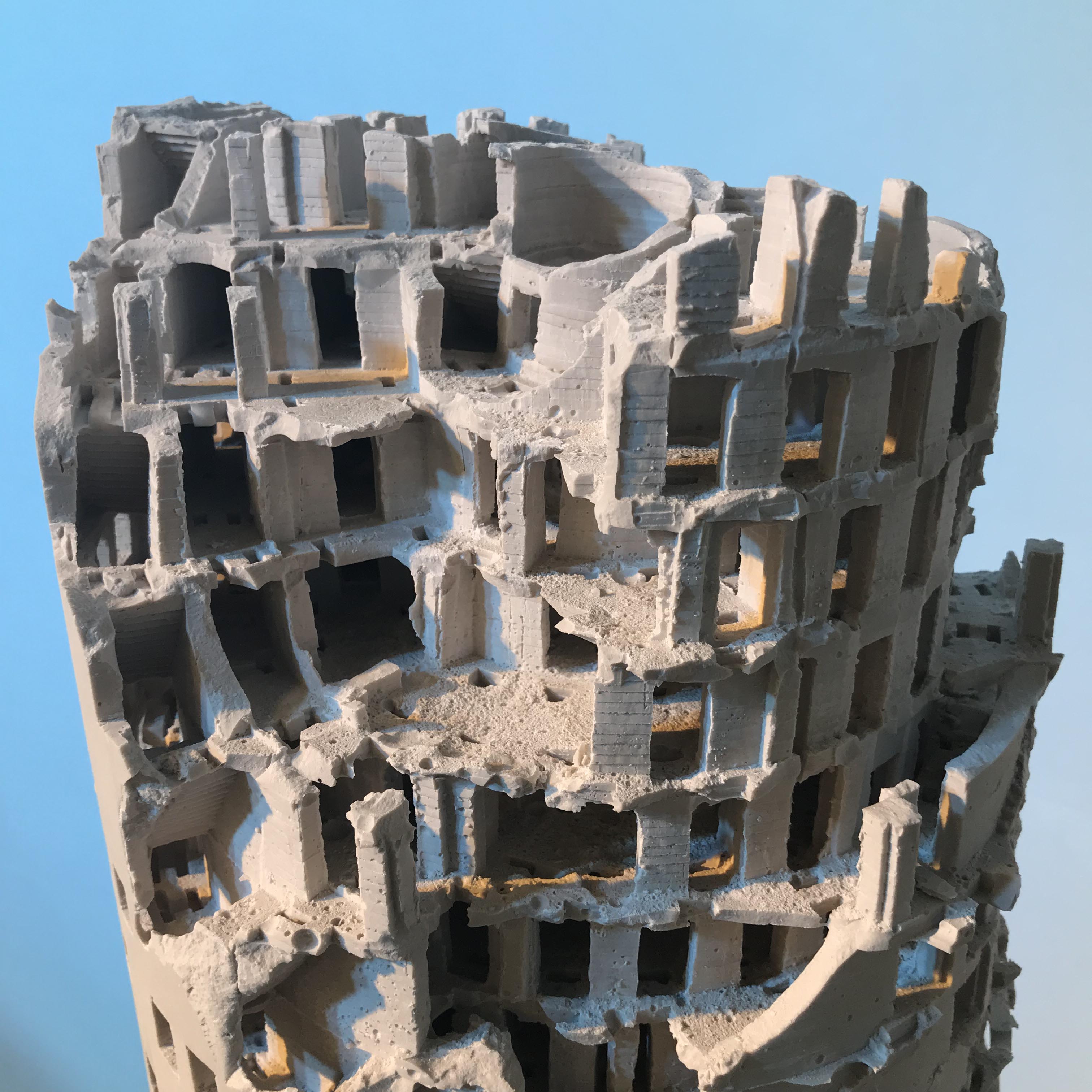Ereis
A series of plaster sculptures by Dirk Zegel. 
The inside
What I want to show with Ereis is something that is often invisible. There are some things we can not see, but we are certain that they are there thanks to knowledge, extrapolation or logic. I have always found these things very important. Perhaps as important as the things that we can see. As a child I was often disturbed by my toys that could be wonderfully detailed from the outside, but when I opened them up, were never correct on the inside. The paper model houses that I glued together had entire constructions between the walls that I would never see after gluing. But that I would never see it did not matter, because I knew it was there. The lack of an observer does not, in my view, deprive anything of it’s right to exist, and knowing, without actually observing, gives me great satisfaction. This is an essential part of me as a person, that manifests itself in many ways. For example, if I have to leave a nice piece of music halfway through, I let the music play on in my empty house, even though there are no ears to hear the music end. 
In the Ereis sculpture series, I made the inside with as much attention as the outside. Every hallway, doorway, staircase, into the deepest interior of the sculptures, where no one will ever see them. For this reason I have devised a production process that gives equal attention to each individual space. Every space is poured out of paraffin wax one by one and worked by hand.

The method
To make the interior space of the final sculptures properly, I think out systems of rooms, corridors, doorways, windows and sometimes stairs, which can be put together in a certain way. Through many intermediate steps, which you can read about here, I make this into plaster sculptures. Imperfections occur in each of the intermediate steps, which can not be prevented but can be influenced. Allowing these imperfections to varying degrees, in the different steps of the process, can lead to very different end results. The imperfections give the images something organic. I could also make these sculptures with a laser cutter or 3D printer, but then they are in my view lifeless.

The name Ereis
Ereis is an old word that means ‘once’, ‘ever’, or ‘journey’ and descends from ‘ene reise’. The meaning is approximately: ‘once upon a journey’. As a title for my series of plaster sculptures, it personally refers to the experiences I have gained during my expeditions to ghost towns. To get an impression of these expeditions, you can look at the photo series of artist Elise van der Linden. She is a regular participant in these expeditions.
Ereis as a word also refers to time and thus decay. Although decay was not my immediate goal when I started making these images, it is a side effect that makes a big contribution to the ultimate feeling that my sculptures radiate. I break open parts of the sculptures to get a glimpse of the interior. A kind of harbinger of the parts that you can not see. The decay gives a sense of abandonment. A presence without observers.

Below you can see the Ereis sculptures that have been made so far. (As far as they have been translated into English.)









